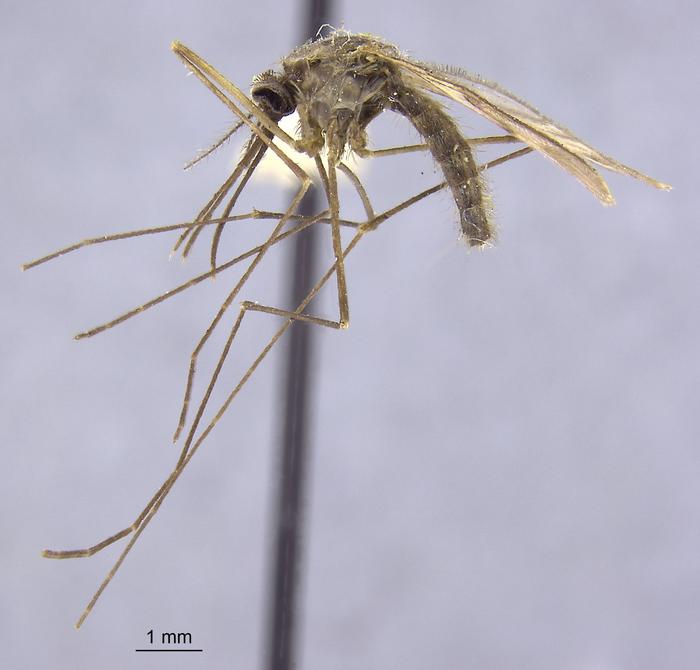Mosquito detectives track malaria’s history
A group of researchers is calling on colleagues around the world to join them in what they call “pathogen prospecting” by tracking down archival specimens of mosquitoes in museums and other collections to examine them for pathogens that would have infected people with malaria while feeding on their blood. Credit: California Academy of Sciences A […]

A group of researchers is calling on colleagues around the world to join them in what they call “pathogen prospecting” by tracking down archival specimens of mosquitoes in museums and other collections to examine them for pathogens that would have infected people with malaria while feeding on their blood.

Credit: California Academy of Sciences
A group of researchers is calling on colleagues around the world to join them in what they call “pathogen prospecting” by tracking down archival specimens of mosquitoes in museums and other collections to examine them for pathogens that would have infected people with malaria while feeding on their blood.
Researchers from McMaster University, Public Health Ontario and Leiden University in the Netherlands present their case for the deeper study of archival mosquitoes in a paper published in the journal Proceedings of the National Academy of Sciences.
Individual mosquitoes that transmitted malaria to people, housed in museums around the world, can be very useful to scientists using modern tools and methods to study how the often-deadly and still prevalent disease moved through human populations – and how it continues to move today.
“Historic entomology collections around the world have huge potential to answer multiple research questions,” says McMaster paleopathologist Megan Brickley, who holds the Tier 1 Canada Research Chair in the Bioarchaeology of Human Disease. “Our focus was on malaria, but there’s great potential to extend beyond that.”
Mosquitoes housed in public and private collections – some featuring samples collected during colonial expeditions as far back as the 1700s – represent an untapped trove of new information about species of Plasmodium, the single-celled parasites that cause malaria by catching a ride into the flesh by using feeding mosquitoes as carriers, or vectors.
Modern science can extract information about the evolution and movement of malaria through DNA analysis and other forms of testing, the authors say. That can accelerate the effort to protect vulnerable human populations from the continuing threat of malaria. The World Health Organization recorded 249 million cases of malaria worldwide in 2022, including 608,000 deaths. Three quarters of those who died were children under the age of 5 years.
The scientific study of historical malaria has been challenging because the infection typically leaves little trace, particularly in the remains of patients who have survived the fever-inducing disease and died later from other causes.
In recent decades, malaria has been associated primarily with regions with hot climates with robust mosquito populations, including countries in Africa and South Asia. Poverty is a significant influence on the prevalence of malaria today because many people in developing countries are less able to protect themselves from mosquitoes.
As recently as the early 1900s, malaria was also endemic to cooler areas, such as Canada and the United States, where it thrived in the Great Lakes region in particular.
“People tend to associate malaria with tropical and subtropical regions, but in the past, there was also malaria in the Netherlands, the UK, and even in Finland above the Arctic Circle,” says co-author Amanda Cooke, a PhD student whose research focuses on historical malaria in Canada.
Factors including the drainage of wetlands for agriculture and development, the widespread use of insecticides following the Second World War and access to protective equipment such as bed nets ultimately pushed malaria’s endemic reach much farther south.
Today, though, malaria may be on the move again as climate change alters temperature and weather patterns, making the work of understanding malaria’s history more urgent.
“As the deadliest vector-borne disease, malaria continues to present a challenge to those battling the disease and underscores an urgent need for the development of novel insecticides or vaccines,” says co-author Mark Nelder, a medical and veterinary entomologist with Public Health Ontario who specializes in vector-borne diseases. “Pathogen prospecting provides not only an opportunity to reconstruct malaria’s historical epidemiology, but it also informs pathogen/vector evolution and climate-based predictive modelling of malaria distribution.”
Nelder, Cooke and Brickley worked with co-authors Hendrik Poinar, a McMaster University professor who holds the Michael G. DeGroote Chair in Genetic Anthropology, and Rachel Schats of Leiden University’s Laboratory for Human Osteoarchaeology.
Journal
Proceedings of the National Academy of Sciences
DOI
10.1073/pnas.2310859121
Method of Research
Commentary/editorial
Subject of Research
Animals
Article Title
Pathogen prospecting of museums: Reconstructing malaria epidemiology
Article Publication Date
25-Mar-2024
COI Statement
None
What's Your Reaction?


































